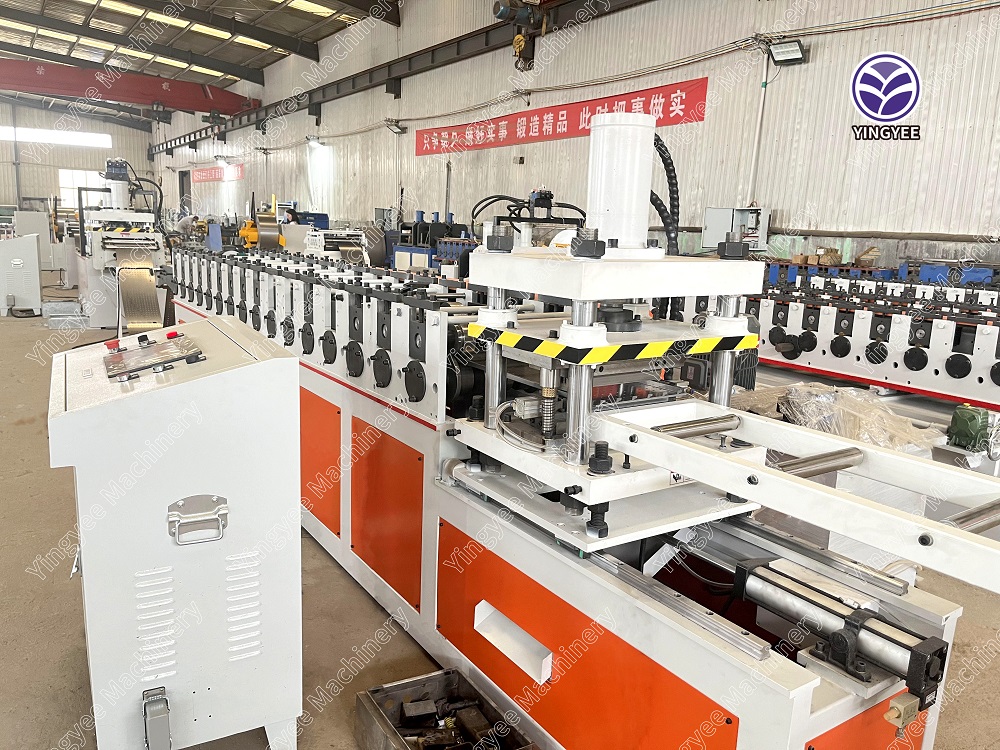
Understanding Door Frame Forming Machines Revolutionizing Construction and Manufacturing
In the ever-evolving world of construction and manufacturing, efficiency and precision are paramount. One of the innovations that have significantly transformed this sector is the door frame forming machine. This machinery plays a crucial role in the production of door frames, which are essential components in any building project. By automating the manufacturing process, these machines not only save time but also enhance the quality of door frames produced.
A door frame forming machine is designed to produce various types of door frames, including interior and exterior models, utilizing a variety of materials such as steel, aluminum, or composite materials. The machine typically operates through a series of processes including cutting, bending, and welding, which shape raw materials into the final door frame product. Each step is meticulously controlled to ensure precision and uniformity, which are vital in construction to guarantee that door frames fit perfectly within their designated openings.
One of the primary benefits of using a door frame forming machine is the significant reduction in labor costs. Manual fabrication of door frames is not only time-consuming but also requires a skilled workforce that may not always be available. With the advent of automated machinery, companies can streamline their operations with fewer workers while improving output. The speed at which these machines operate enables manufacturers to meet tight deadlines and large order quantities, which is increasingly essential in a competitive market.

Moreover, door frame forming machines are equipped with advanced technology that enhances precision. Automated systems often include computer numerical control (CNC) capabilities that reduce the margin for error significantly. This technological integration allows manufacturers to create door frames that are not only structurally sound but also aesthetically pleasing. Consistency in size and design across multiple units is crucial for both functional and visual purposes, especially in large construction projects where uniformity is a standard requirement.
The versatility of door frame forming machines is another significant advantage. These machines can be easily adjusted to accommodate various design specifications and frame styles. Whether producing standard rectangular frames or custom designs tailored to specific building needs, the adaptability of these machines allows manufacturers to cater to a diverse client base. This ability to pivot based on client demands enhances a company's marketability and can lead to greater customer satisfaction.
Environmental considerations are also becoming increasingly important in manufacturing. Many modern door frame forming machines are designed to minimize waste and optimize material use. Advanced cutting techniques reduce excess material, and some machines are capable of recycling scrap materials back into the production line. This focus on sustainability not only benefits the environment but also reduces material costs for manufacturers, presenting an ethical yet economically viable model.
In conclusion, the door frame forming machine stands out as a testament to innovation within the construction and manufacturing industry. Its ability to produce high-quality, consistent, and versatile door frames efficiently has revolutionized how these essential components are made. As the industry continues to evolve towards automation and sustainability, the door frame forming machine will undoubtedly play a pivotal role in shaping the future of building construction. The advantages it offers—cost-effectiveness, precision, versatility, and environmental consciousness—make it an indispensable asset for manufacturers aiming to thrive in a rapidly changing marketplace. As we look ahead, embracing these technologies can lead to improved practices, better products, and ultimately, more robust structures that stand the test of time.